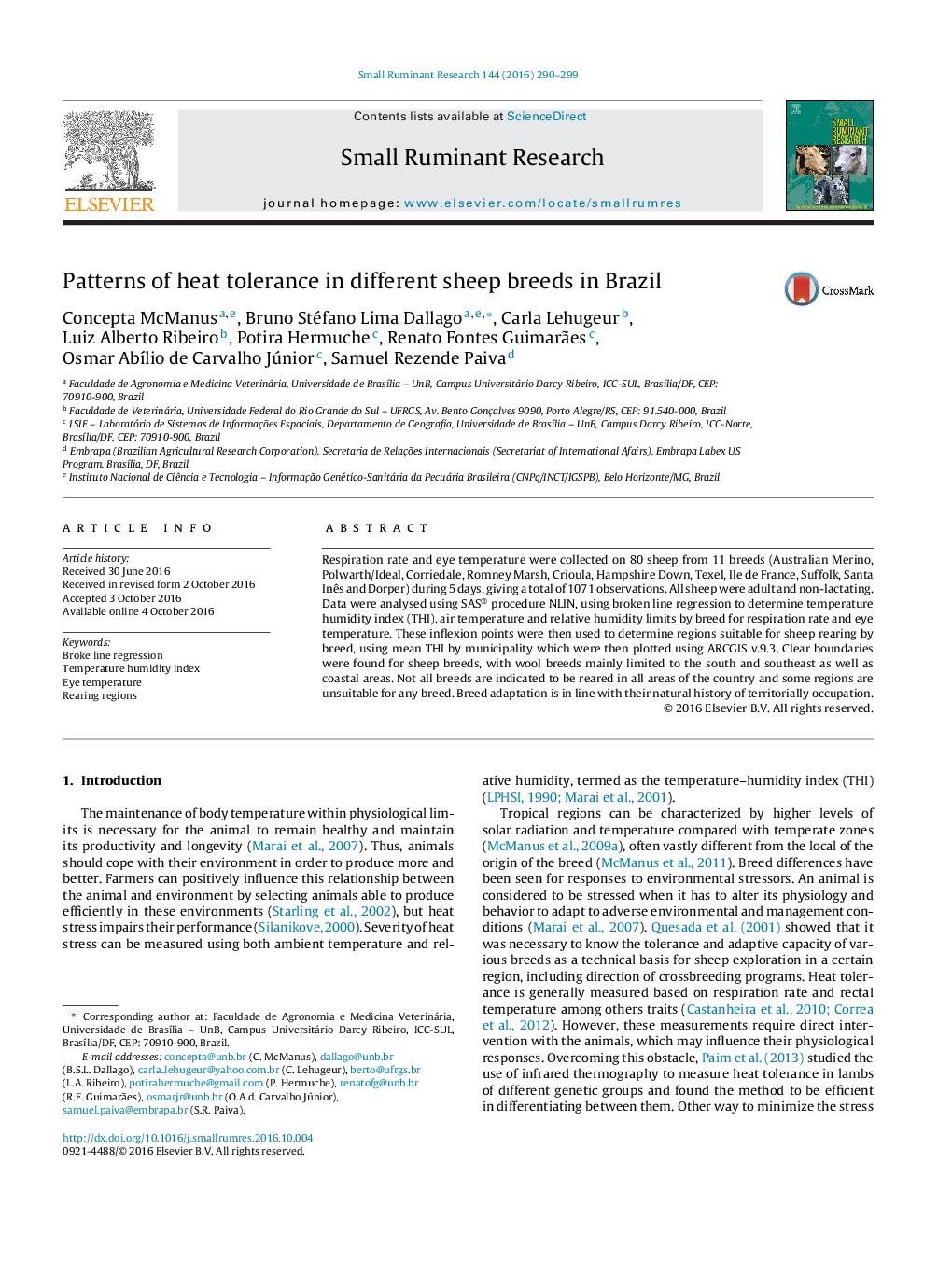| Article ID | Journal | Published Year | Pages | File Type |
|---|---|---|---|---|
| 5795274 | Small Ruminant Research | 2016 | 10 Pages |
â¢We used broken line regression to determine physiological limits by breed;.â¢Inflexion points were used to determine regions suitable for sheep rearing by breed;.â¢Clear boundaries were found for sheep breeds;.â¢Not all breeds are indicated to be reared in all areas of the country;.â¢Some regions are unsuitable for any breed.
Respiration rate and eye temperature were collected on 80 sheep from 11 breeds (Australian Merino, Polwarth/Ideal, Corriedale, Romney Marsh, Crioula, Hampshire Down, Texel, Ile de France, Suffolk, Santa Inês and Dorper) during 5 days, giving a total of 1071 observations. All sheep were adult and non-lactating. Data were analysed using SAS® procedure NLIN, using broken line regression to determine temperature humidity index (THI), air temperature and relative humidity limits by breed for respiration rate and eye temperature. These inflexion points were then used to determine regions suitable for sheep rearing by breed, using mean THI by municipality which were then plotted using ARCGIS v.9.3. Clear boundaries were found for sheep breeds, with wool breeds mainly limited to the south and southeast as well as coastal areas. Not all breeds are indicated to be reared in all areas of the country and some regions are unsuitable for any breed. Breed adaptation is in line with their natural history of territorially occupation.
Graphical abstractDownload high-res image (207KB)Download full-size image
